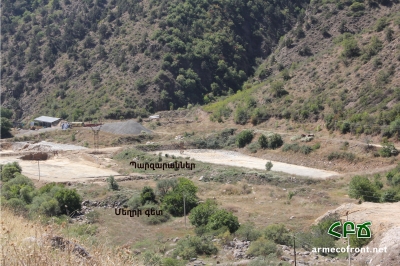

Levon Galstyan, Geographer,
Pan-Armenian Environmental Front (PEF) civic initiative
Pan-Armenian Environmental Front (PEF) civic initiative
The quality of the water in the Meghri River is of high class (II) with the exception of three-kilometer-long exception in the middle reach of the river – the section flowing from Tkhkout Village to Vardanidzor Village, where in spring and summer poor water quality was observed (class V). It turned out in this section the water is polluted with a number of metals – chromium, iron, manganese, cobalt, nickel etc., which are mining consequences in Litchqvaz-Tey, Aygedzor and Terterasar mines.
The dumps of the industrial wastes of Litchqvaz-Tey gold mine pose huge hazard and are the main reasons of water pollution, which are left without any management. This mine used to be developed by “Sipan-1” LLC, then Australian “Iberian Resources” and “Tamaya Resources” Companies. Since 2010 no development has been carried out.
According to the data provided by Energy and Natural Resources Ministry, currently 6 mines can be developed in Meghri River basin – Litchq copper mine, Meghrasar, Litchqvaz-Tey and Tereterasar gold mines, Aygedzor copper and molybdenum and Tghkut mines. The same source informs us that geoprospecting is carried out in another 7 metallic mines, out of which Litchq copper and molybdenum mine is located near the sanitary zone of water distribution system in Litchq Village, Meghri town and other residential areas. Mine development is planned to be carried out in opencast manner for around 40 years, which can have qualitative and quantitative adversary effect on the drinking and irrigation water supply of the Meghri River.
It turns out that 13 metallic mines are planned to be carried in the Meghri River basin - a total of 336 sq/km.
January 27, 2016 at 17:49



